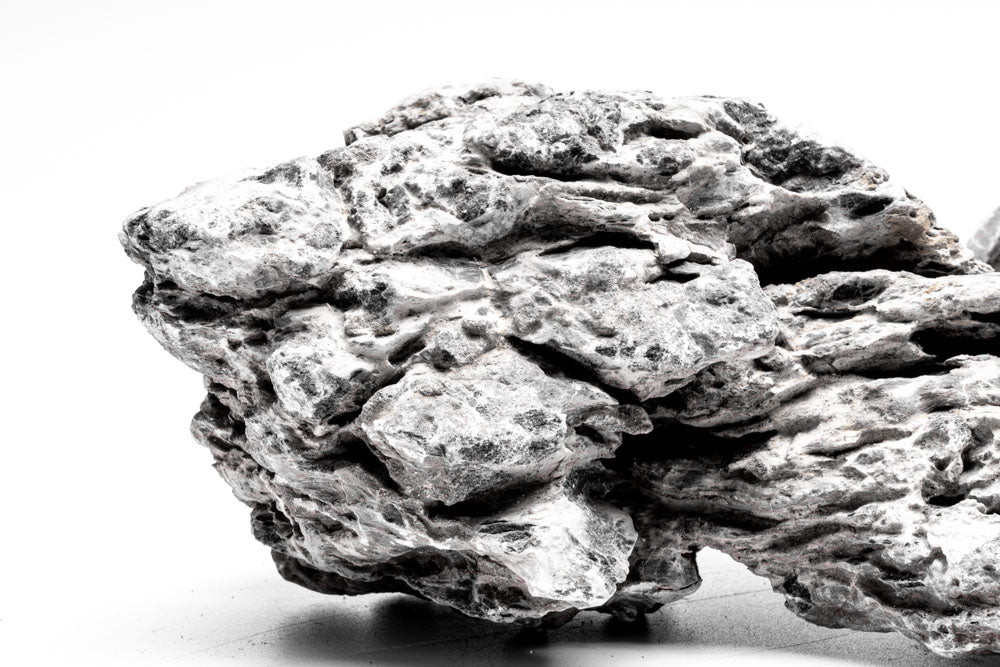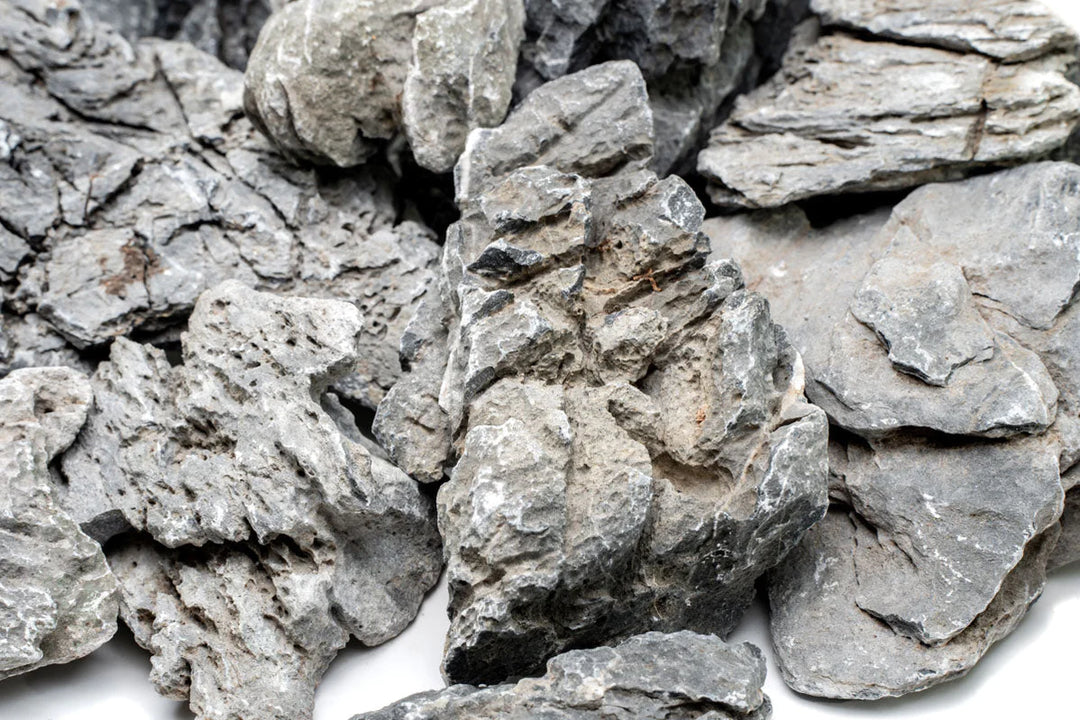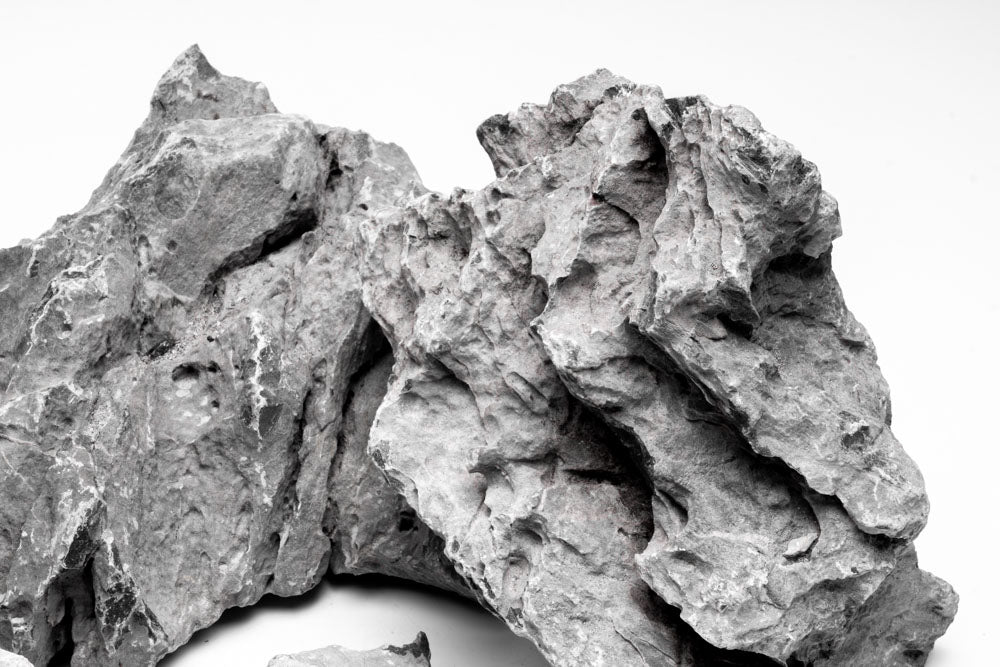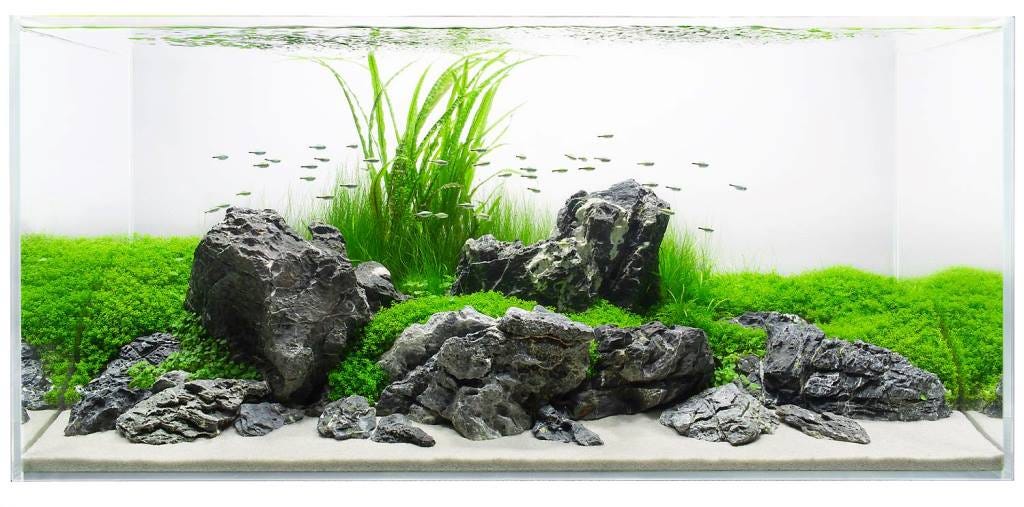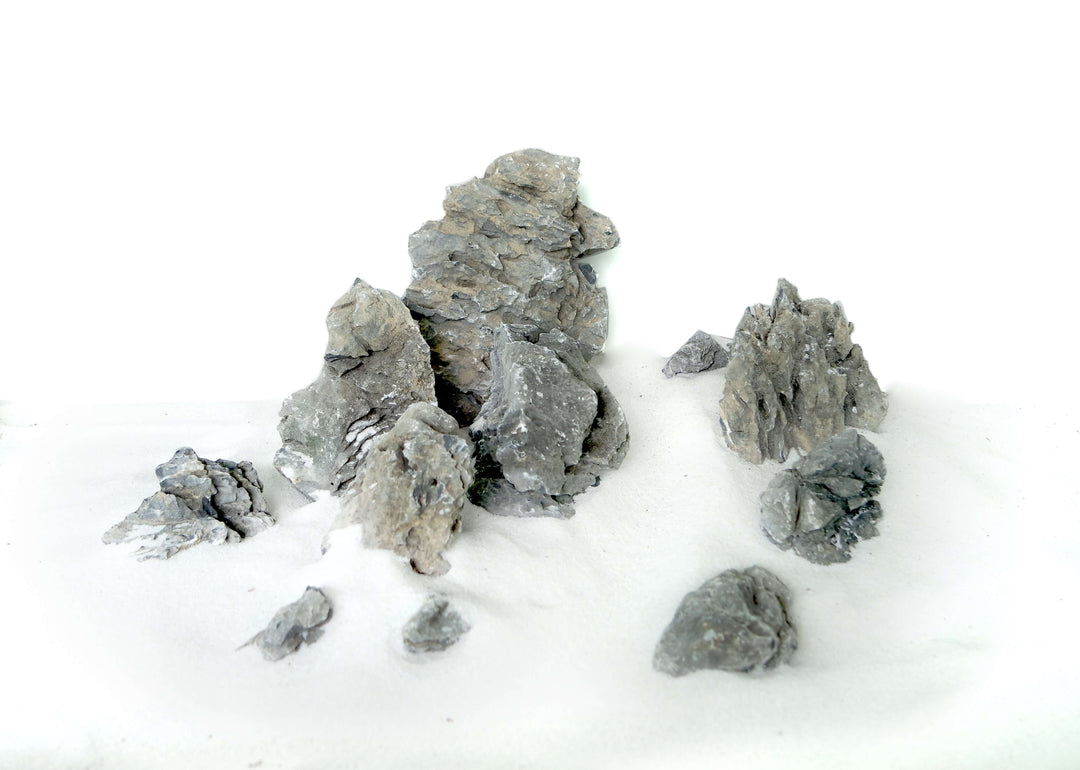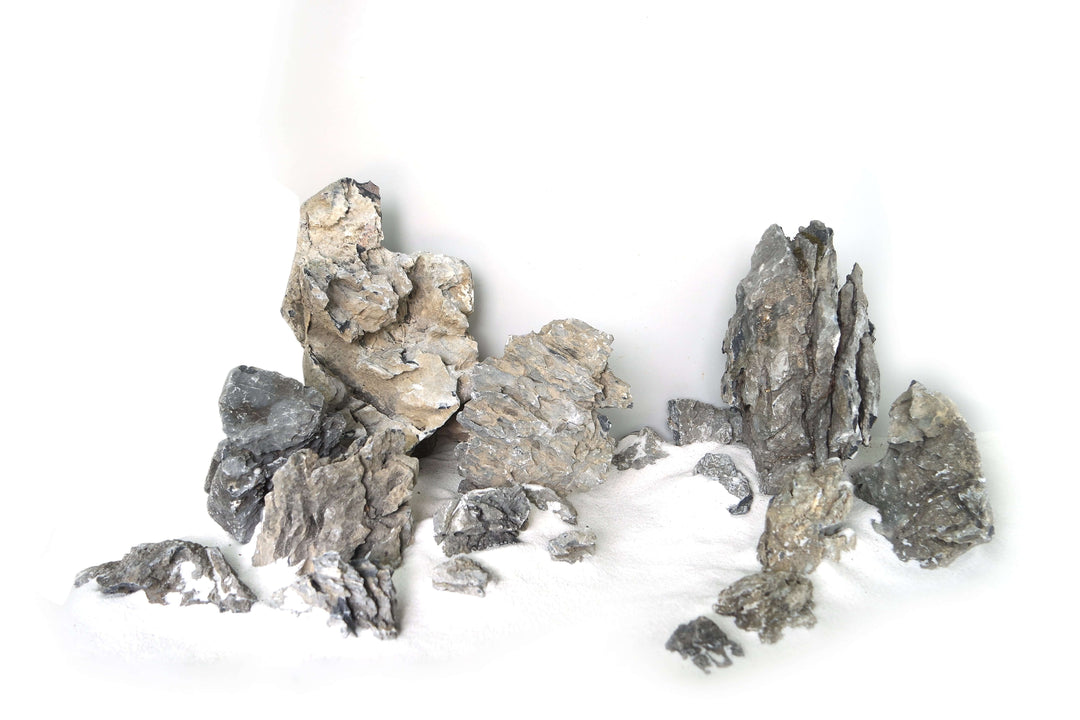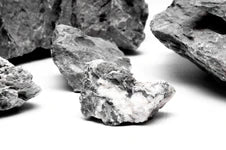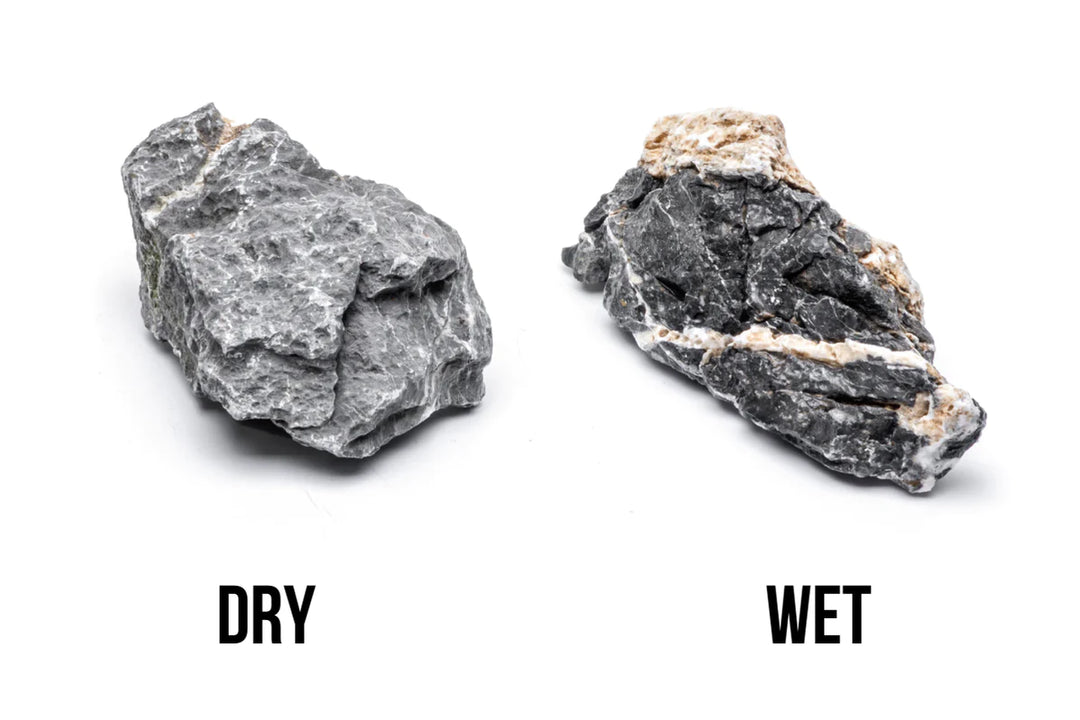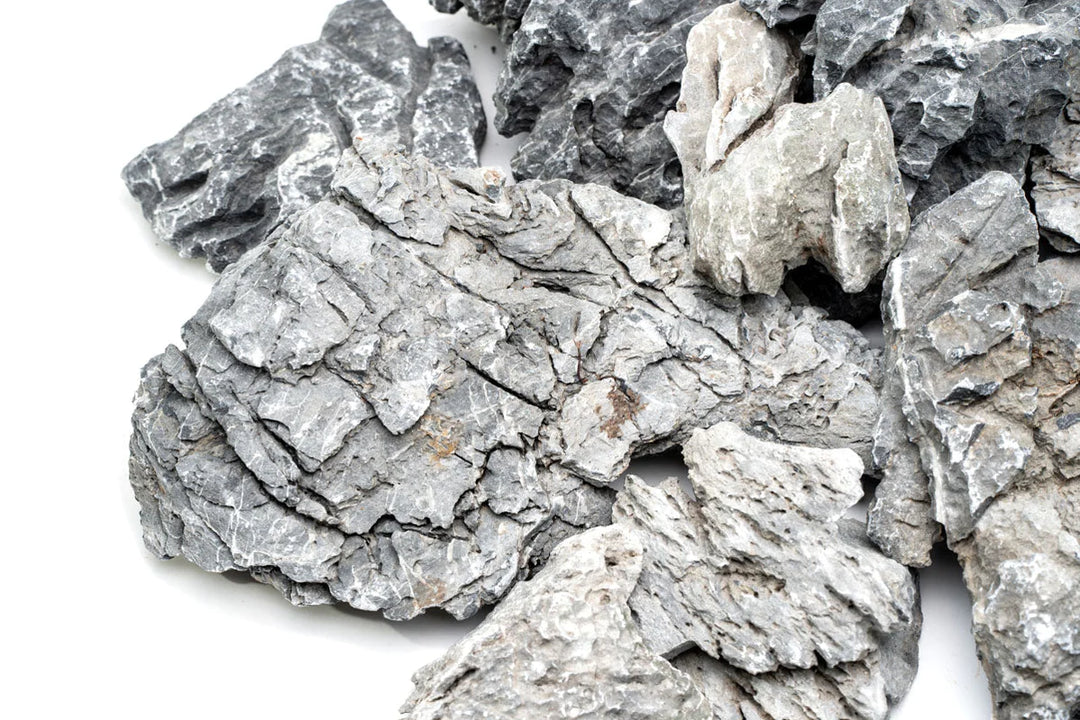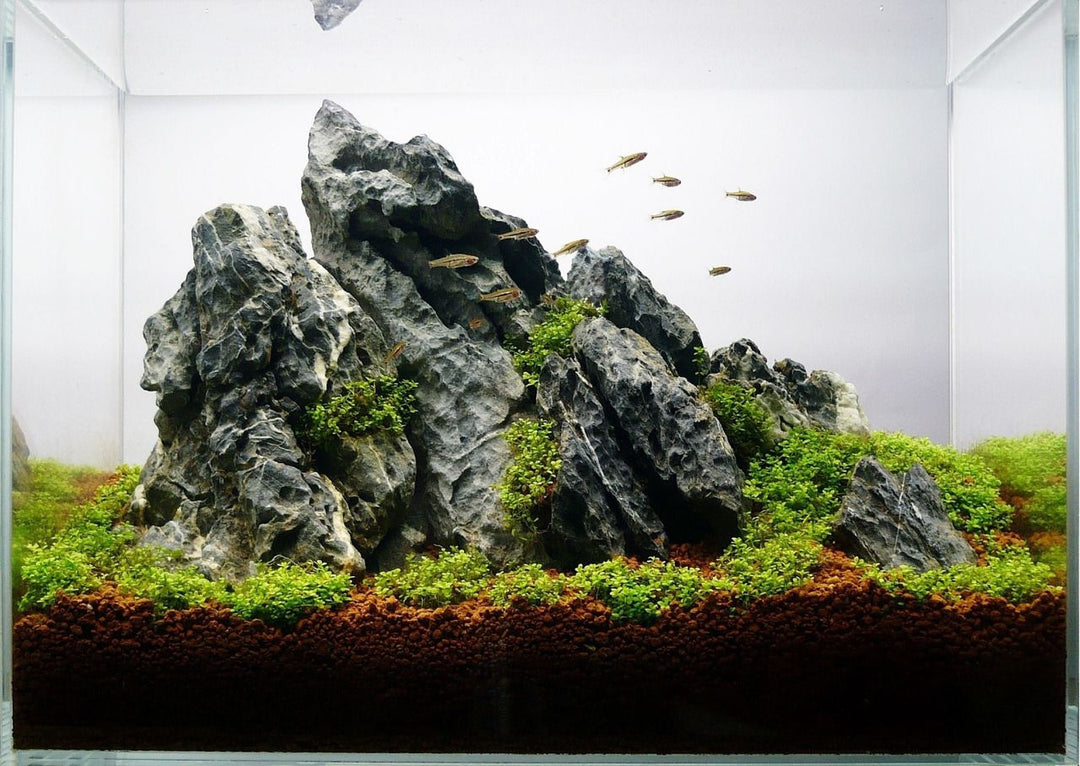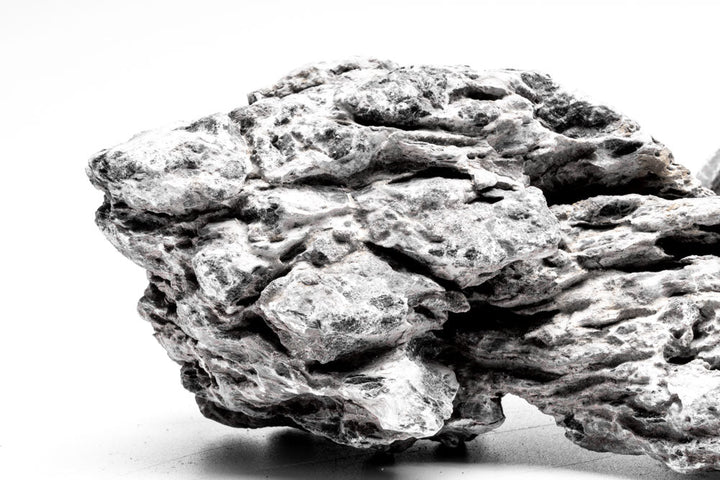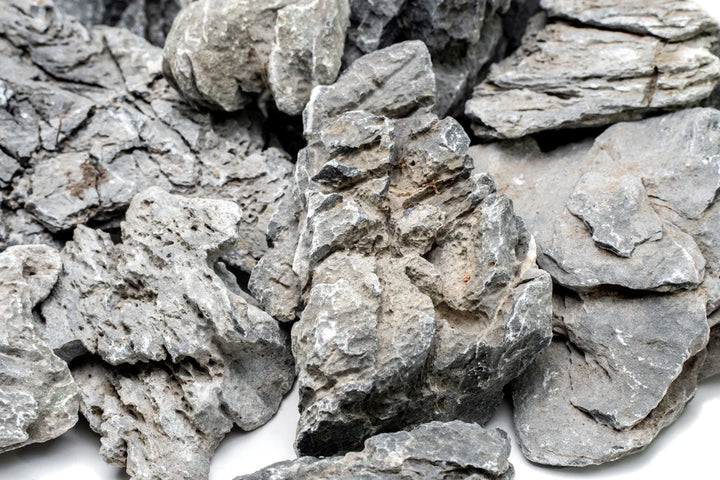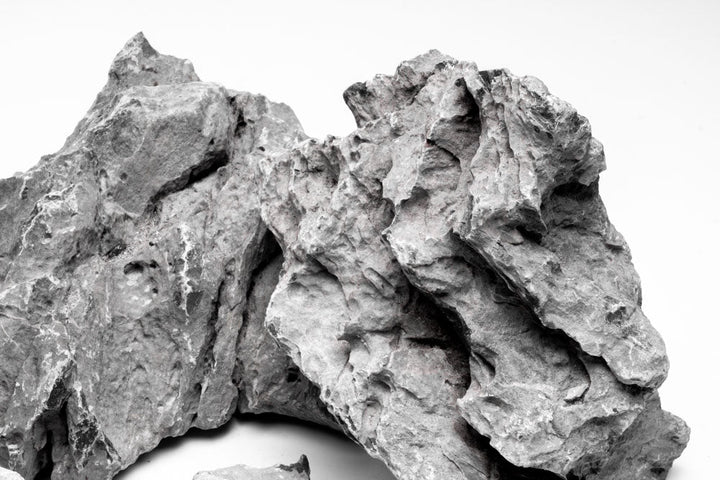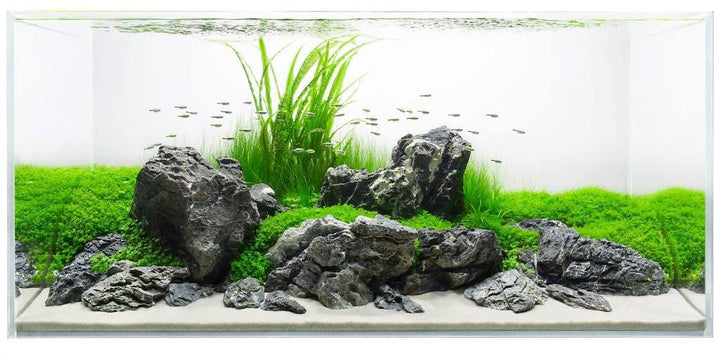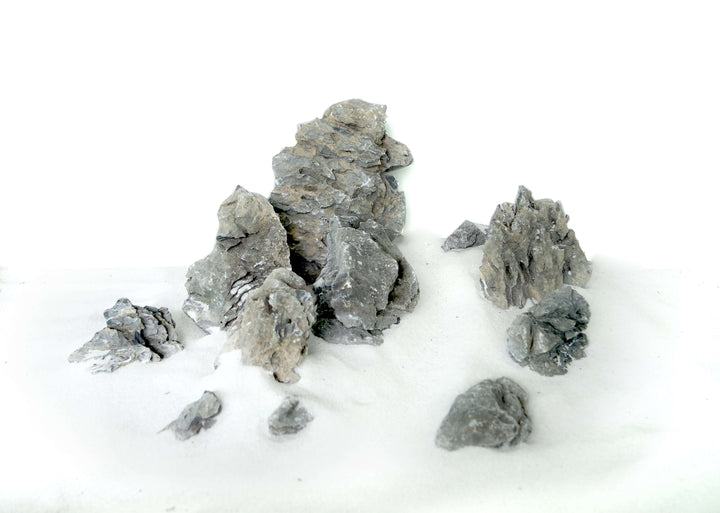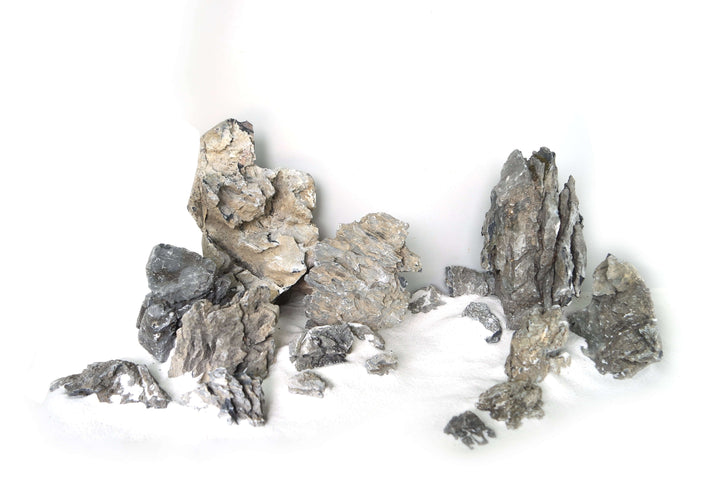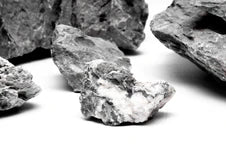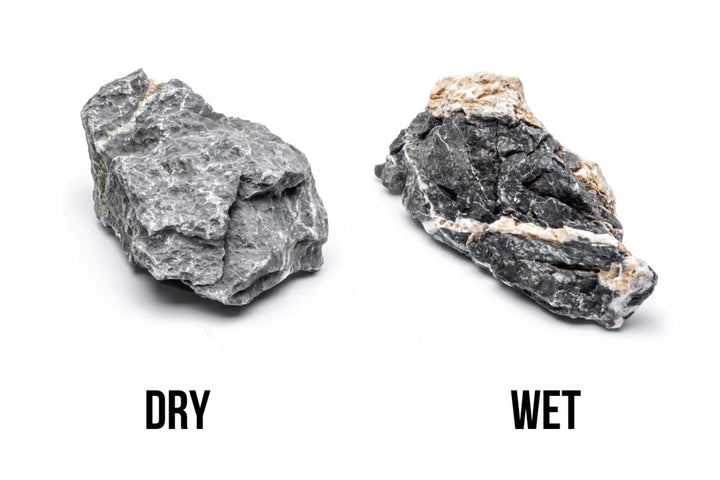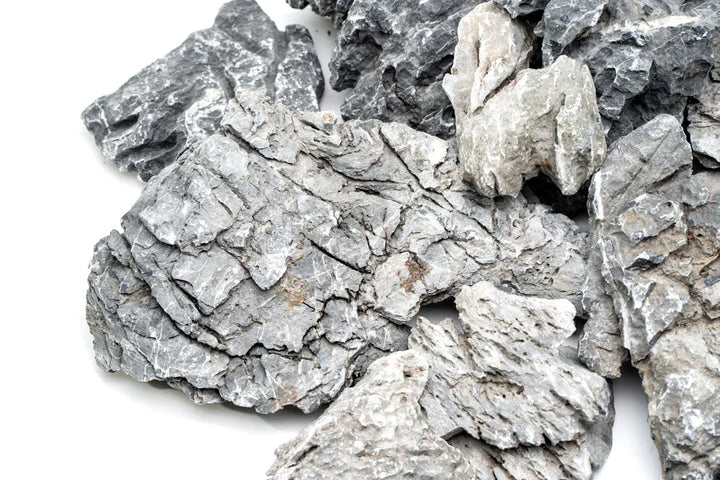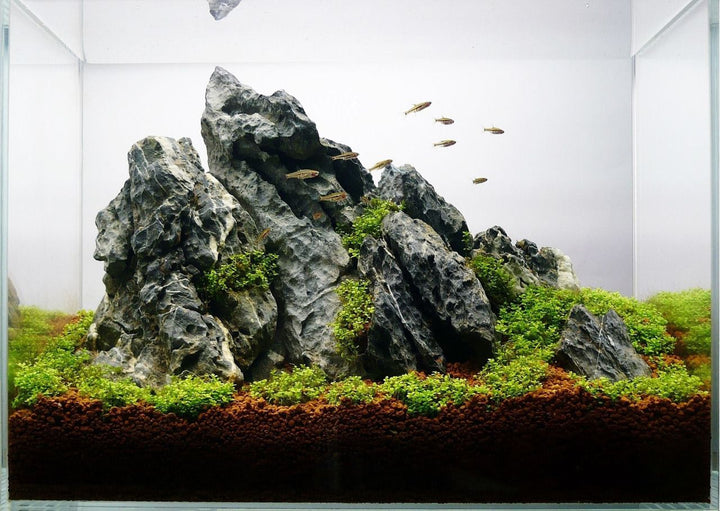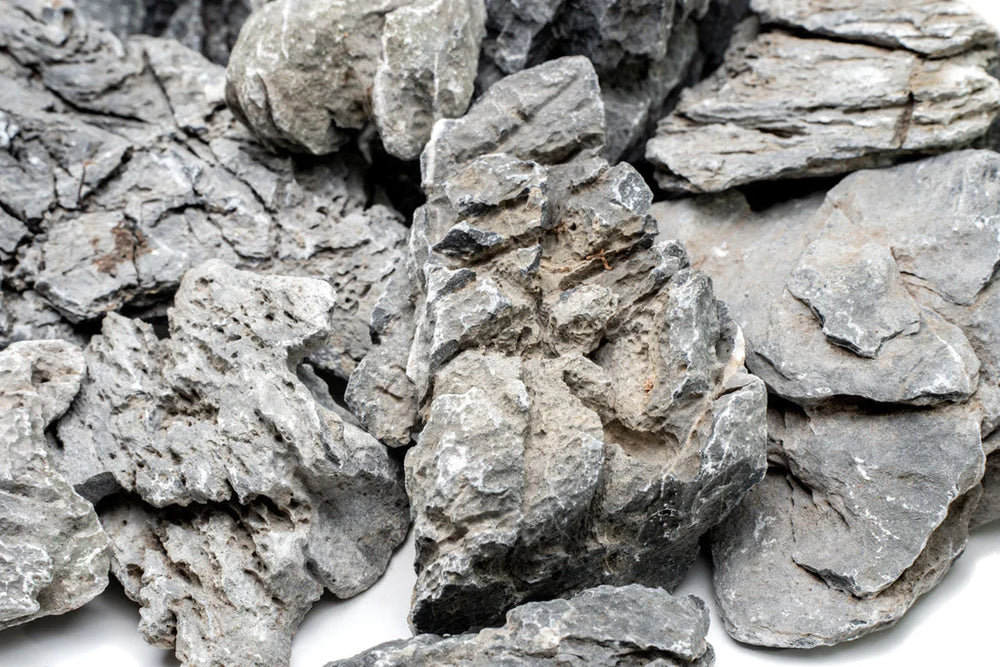Grey Seiryu Stone aquarium rock natural aquascaping stone
Enhance your aquarium with the iconic Grey Seiryu Stone, one of the most sought-after aquascaping rocks in the world. Originating from Japan, this sedimentary rock is known for its dark grey base tones accented with striking white veins, creating a bold and naturalistic foundation for aquascapes.
Seiryu Stone is widely used in Iwagumi-style layouts and nature aquariums, offering both visual impact and functionality. Each piece is unique, with rugged textures and sharp edges that make it ideal for contouring, stacking, and creating realistic cliff formations in your tank.
| Feature | Detail |
|---|---|
| Product Type | Natural aquascaping stone |
| Origin | Japan — named after the Seiryu mountain range |
| Weight | Sold per kg (mixed sizes included) |
| Colour | Grey with white mineral streaks, occasionally blue-grey |
| Texture | Rugged, sharp-edged sedimentary rock with layered formations |
| Applications | Freshwater aquascaping, planted aquariums, and Iwagumi layouts |
| Safety | Fish-safe; may slightly increase pH and hardness over time |
| Feature | Detail |
|---|---|
| Water Chemistry | May raise KH and GH slightly — suitable for most freshwater setups |
| Preparation | Rinse thoroughly before use to remove sediment and dust |
| Durability | Long-lasting, erosion-resistant natural stone |
| Visual Effect | Creates bold contrast and dramatic rock formations in aquascapes |
| Design Style | Ideal for traditional Japanese Iwagumi or minimalist layouts |
| Origin Material | Natural sedimentary limestone with visible veining |
| Packaging | Assorted stones packed by weight for balanced composition |
| Warranty | Replacement available for packaging or material defects only |


